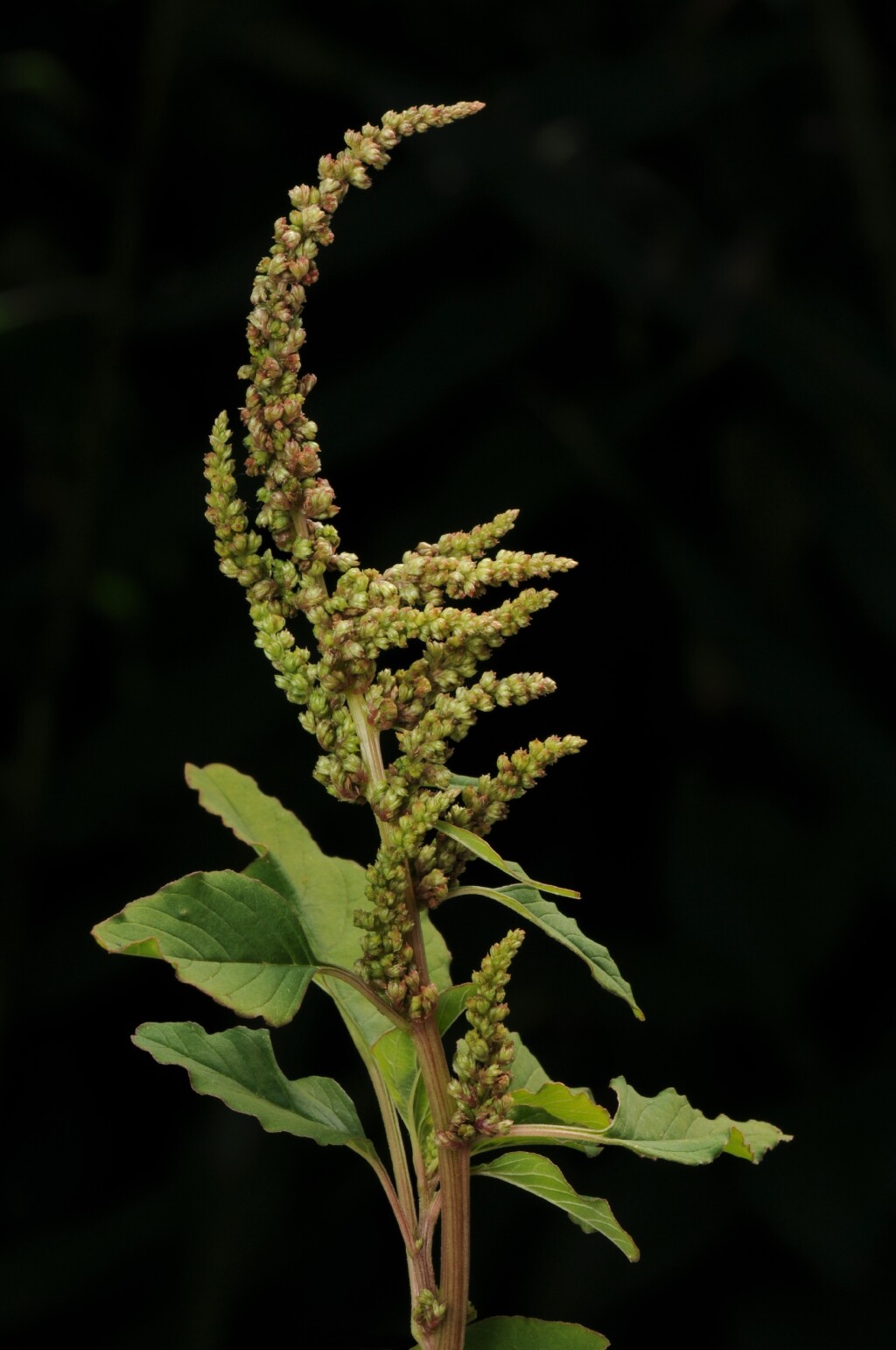Amaranthus viridis
L. Green AmaranthAnnual, ascending to erect herb to 1 m high. Leaves long-petiolate, ovate to c. triangular, lamina 1–10 cm long, 6–60 mm wide; apex obtuse or emarginate. Inflorescence spicate, terminal (and usually also upper-axillary) simple or branched, mostly 5–15 cm long, moderately dense. Flowers unisexual; bracts and bracteoles ovate to broadly ovate, 0.5–1.2 mm long; tepals 3, narrowly obovate, c. 1.5 mm long, acute; stamens 3. Utricle indehiscent, shortly exceeding perianth, flattened-globoid, 1.5–2 mm long, finely wrinkled and/or tuberculate; seed lenticular, brown, dull to shiny, c. 1.2 mm diam. Flowers Dec.–Apr.
MuM, Wim, VVP, VRiv, MuF, GipP, Gold, NIS, EGL. Naturalised all mainland States. Native to tropical America. An occasional weed of railyards, stock holding pens, pavements, gardens, degraded urban creeks etc., mainly in the north (e.g. Mildura, Horsham, Yarrawonga, Benalla), with a few records in the south (Colac, Melbourne, Bairnsdale).
Walsh, N.G. (1996). Amaranthaceae. In: Walsh, N.G.; Entwisle, T.J., Flora of Victoria Vol. 3, Dicotyledons Winteraceae to Myrtaceae, pp. 199–215. Inkata Press, Melbourne.
 Spinning
Spinning



